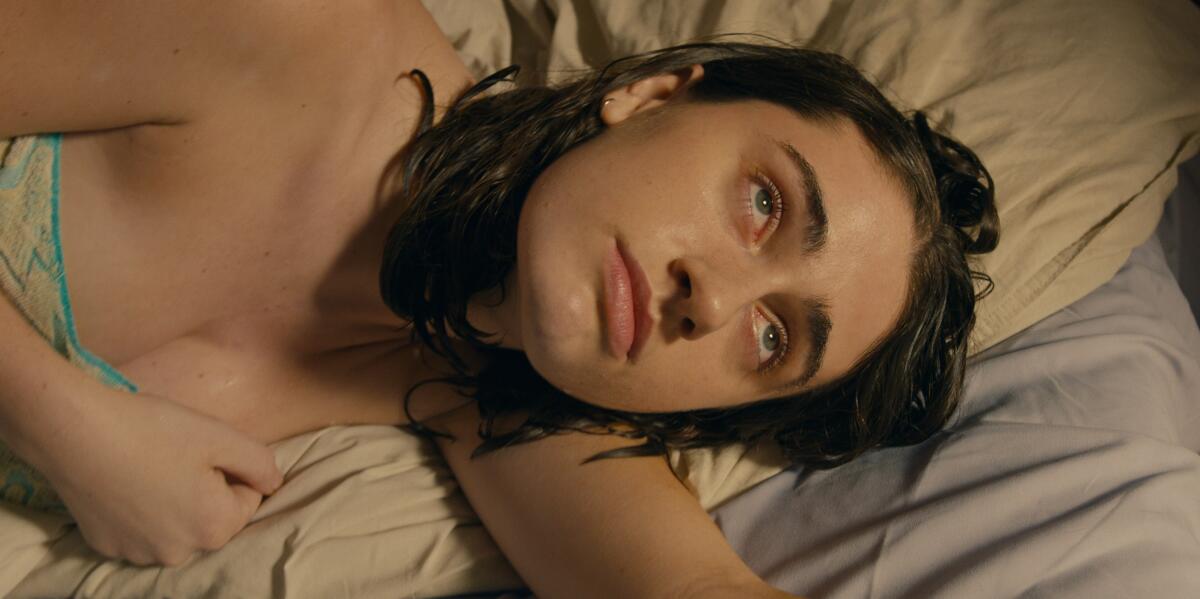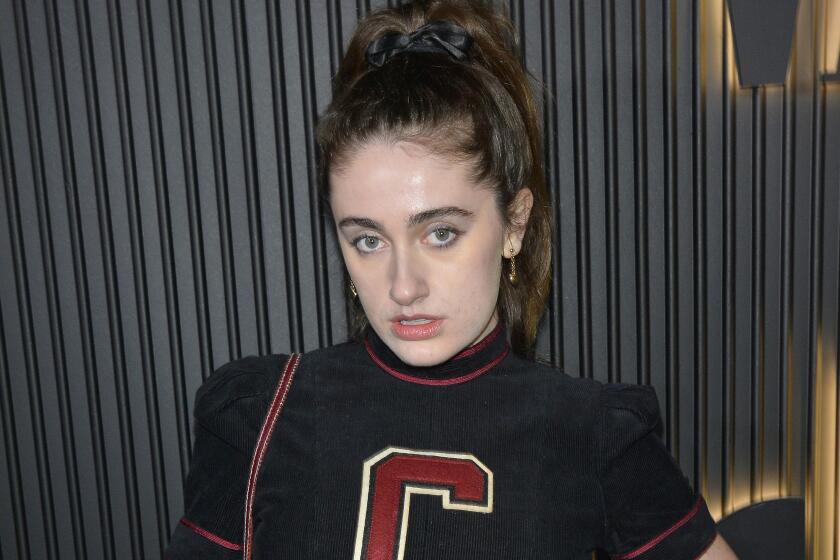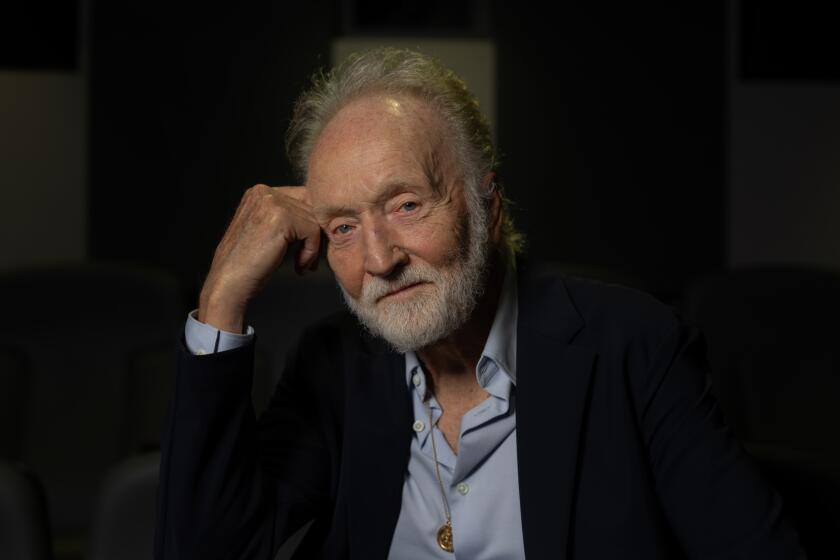Review: In ‘I Used to Be Funny,’ rising indie star Rachel Sennott goes dark, impressing with range

Sam (Rachel Sennott) is depressed. Dissociative and disconnected, she spends her days bed-rotting, microwaving lunch meat and searching her name on Twitter. Never mind getting onstage at Toronto’s Comedy Bar, where she used to titillate audiences with her material about sex, dating, shopping and periods. Sam can’t even leave the house.
She doesn’t feel funny anymore. Her brain is too occupied by PTSD. Her roommates Paige and Philip (Sabrina Jalees and Caleb Hearon) are sympathetic but tired; her ex-boyfriend Noah (Ennis Esmer) is confused and sad. To make matters worse, Brooke (Olga Petsa), the teenager Sam used to nanny, has been reported missing. The last time Sam saw her was when Brooke showed up on her doorstep after lobbing a rock through her window in a drunken rage, calling her a liar.
This is the situation into which we are dropped at the outset of director Ally Pankiw’s “I Used to Be Funny,” a story of trauma, catharsis and stand-up comedy. Through a jarring nonlinear narrative composed of flashbacks, memories and the harsh reality of the present, we wind our way through Sam’s broken psyche to piece together the puzzle of what happened. Sadly, it’s almost too obvious from the outset.
Sennott, who got her start in stand-up comedy but has become an indie-film darling with genre-spanning films like “Shiva Baby,” “Bodies Bodies Bodies” and “Bottoms,” has demonstrated that she can hold her own as an actor. And “I Used to Be Funny” is her most dramatically demanding role yet. It’s a stretch and she just manages it but proves she can lead a movie as the emotional anchor in a role that requires a wide range.
Rachel Sennott has already conquered SXSW. Her two films this year, ‘Bottoms’ and “I Used to Be Funny,’ show new sides of her talent.
The film is a character study in contrasts, glimpsed in moments over the course of a few years. The dead-eyed, bedridden Sam is a far cry from the easygoing young woman who interviews for an au pair job with a Toronto police officer, Cameron (Jason Jones), to care for his 12-year-old daughter Brooke while her mother is hospitalized with a terminal illness. Though Brooke is too old for a nanny or babysitter, Sam becomes a crucial presence in her life: a big sister, friend and sometimes surrogate mother.
In flashbacks, Sam’s nonchalant charisma conveys a relaxed and confident young woman, but in Sennott’s performance, we can see the careful effort mustered in maintaining this outward demeanor, charming, assuaging and placating those around her — especially men. She wants to prove she can hold her own, that she is funny, that she is worthy of attention, but this kind of humorous soothing is also a survival mechanism, a safety strategy that women have honed over years of socialization.
Sam used to joke in her set that her flirty move on dates was to make men pinky-promise they wouldn’t murder her. Making light of violence against women is part of her act, castrating its power, denaturing the sting. Then she becomes paralyzed by actual violence and Pankiw slowly reveals the events to us, as Sam becomes more willing to open her mind to the memory, facing her demons simply because she can’t do anything else.
We’ve mapped out 27 of the best movie theaters in L.A., from the TCL Chinese and the New Beverly to the Alamo Drafthouse and which AMC reigns in Burbank.
Pankiw has been honing her original screenplay for over a decade, and while some of the plot beats hew toward heightened melodrama within a lo-fi indie milieu, the writing itself is insightful, incisive and authentic. Sam’s guilt over her condition, believing herself unworthy of kindness and love is deeply relatable. Casting real comedians like Sennott, Jalees, Hearon and Esmer also makes for dialogue that feels funny, their irrepressible riffing a natural part of their conversations. And Sennott is ably matched by Petsa, a fantastic young actor, in navigating the emotional roller coaster of this complicated story.
“I Used to Be Funny” keeps its visual style gritty, with understated but lovely cinematography by Nina Djacic. The formal experimentation is relegated to the editing and story structure, which unfolds in jagged ellipticals, mimicking a fickle, troubled mind. Many of the uncomfortable ideas are explored in Sam’s comedy, a masterful way for Pankiw to tackle these themes. In her film debut, she delivers a full and fulfilling narrative arc that is anchored by a surprisingly complex performance from Sennott. Rooted in a specific sense of place, character and emotional truth. The movie is a rare indie gem worth discovering.
Walsh is a Tribune News Service film critic.
'I Used to Be Funny'
Not rated
Running time: 1 hour, 45 minutes
Playing: In limited release Friday, June 7 at Laemmle Monica, West Los Angeles; The Frida Cinema, Santa Ana
More to Read
Only good movies
Get the Indie Focus newsletter, Mark Olsen's weekly guide to the world of cinema.
You may occasionally receive promotional content from the Los Angeles Times.












